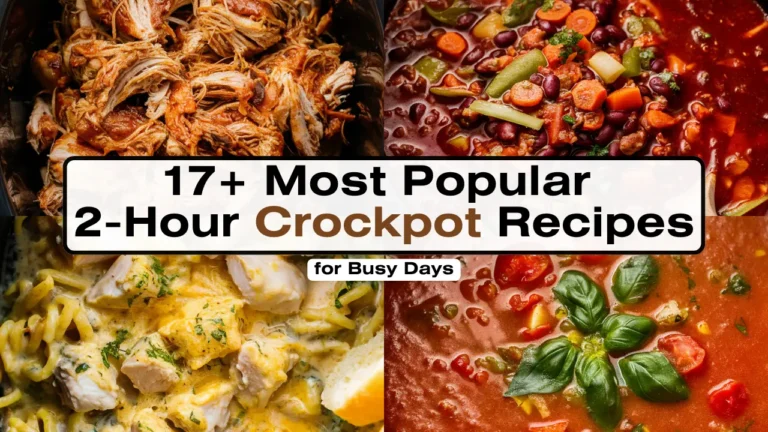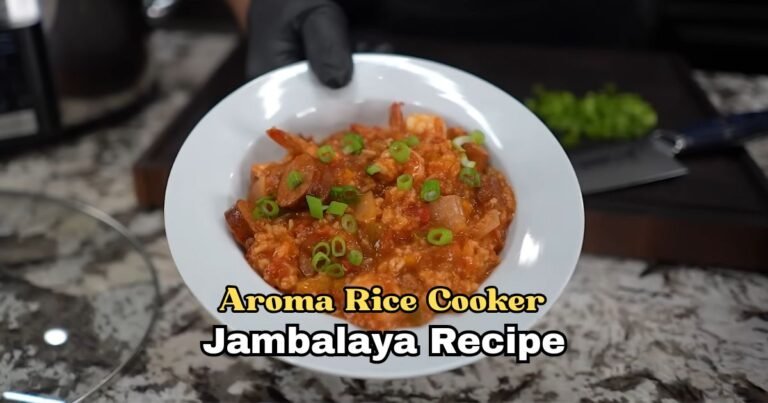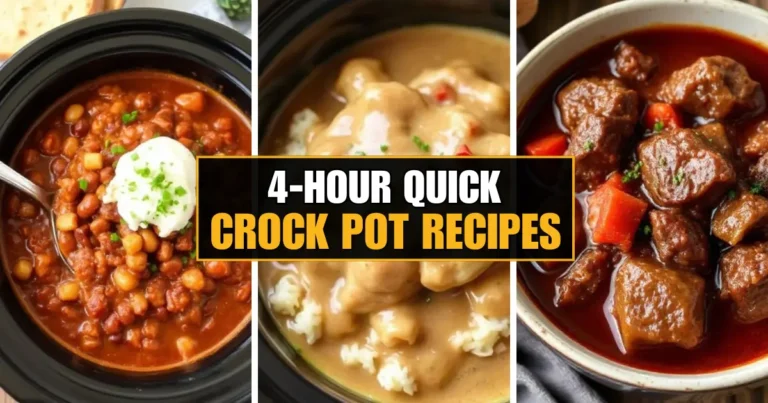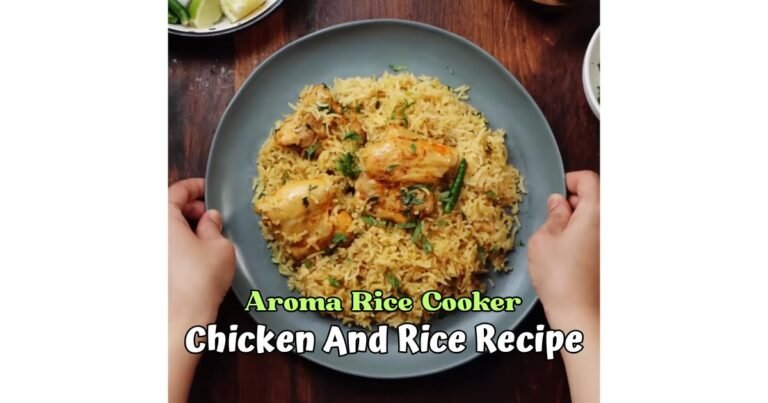49 Mexican Food Names with Pictures
Mexican food is loved all over the world, and it’s not hard to figure out why! It’s packed with bold, exciting flavors that wake up your taste buds. Think spicy chilies, zesty lime, and fresh herbs like cilantro—every bite is full of life. Another big reason is the variety.
Whether you’re enjoying street food or a homemade meal, Mexican cuisine always feels warm and comforting. It’s also very flexible—many dishes can be made spicy or mild, meat-based or vegetarian. That’s why people from many cultures enjoy it so much.
In this blog post, I’ll show you 49 Mexican food names with pictures so you can see what each one looks like. If you’re planning a trip to Mexico or just looking to try new recipes, this list will make you hungry and inspired.
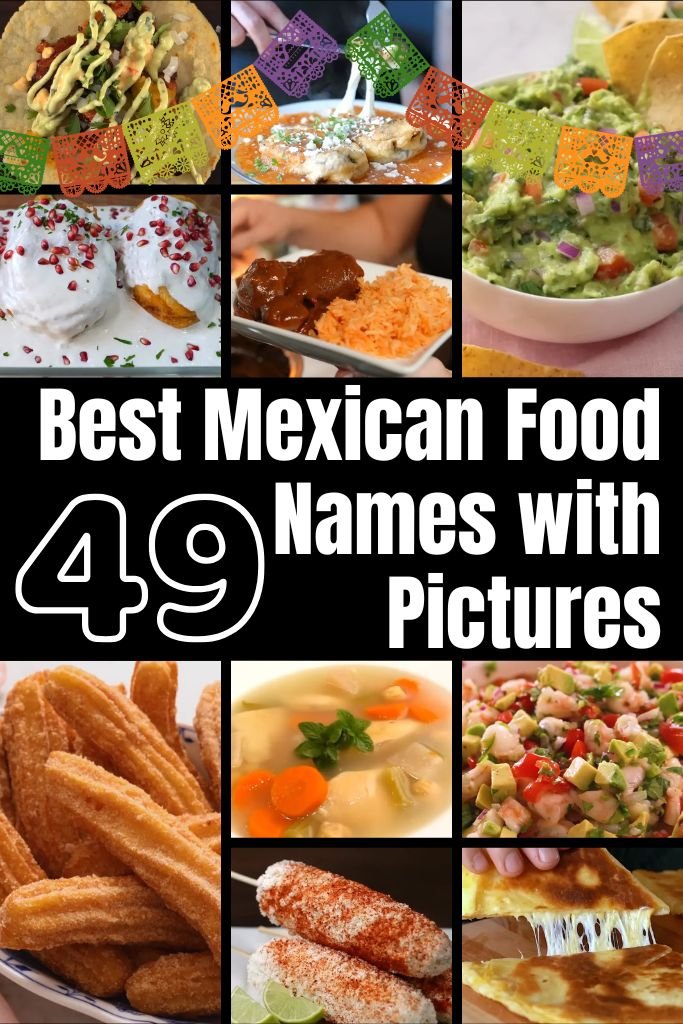
49 Mexican Food Names with Pictures
Mexican food is more than just tacos and burritos—there’s a whole world of flavors waiting to be discovered. From hearty stews to sweet treats, each dish tells a story of culture and tradition.
With these 49 Mexican food names with pictures, you’ll get a visual taste of what makes this cuisine so special and diverse.
1. Tacos al Pastor
Tacos al Pastor represents one of Mexico’s most beloved street foods, featuring marinated pork that’s stacked on a vertical rotisserie and slowly cooked, similar to Middle Eastern shawarma.
The meat is marinated in a mixture of dried chilies, spices, and pineapple, creating a complex sweet and savory flavor profile. Once cooked, the caramelized outer layer is thinly sliced and served on small corn tortillas, topped with fresh cilantro, onions, pineapple chunks, and a squeeze of lime.
The combination of juicy, spiced meat with the freshness of the toppings creates an irresistible taste experience that balances heat, acidity, and sweetness in each bite.
This dish emerged from Lebanese immigrants who brought shawarma techniques to Mexico, which then evolved into this distinctly Mexican creation that now symbolizes the country’s street food culture.

2. Enchiladas
Enchiladas are a cornerstone of Mexican cuisine, consisting of corn tortillas that are lightly fried, dipped in savory sauce, filled with various ingredients, rolled up, and typically topped with more sauce and cheese.
The versatility of enchiladas lies in their many regional variations – from enchiladas verdes with tomatillo sauce and chicken filling to enchiladas rojas with guajillo chile sauce and cheese. The tortillas absorb the sauce’s flavors while maintaining enough structure to hold the fillings, creating a perfect harmony of textures.
When you bite into an enchilada, you’ll experience the softness of the tortilla, the richness of the filling, and the complex depth of the sauce, all complemented by toppings like crema, queso fresco, lettuce, or avocado.
This dish exemplifies Mexican cooking’s ability to transform simple ingredients into something extraordinary through thoughtful preparation and layering of flavors.
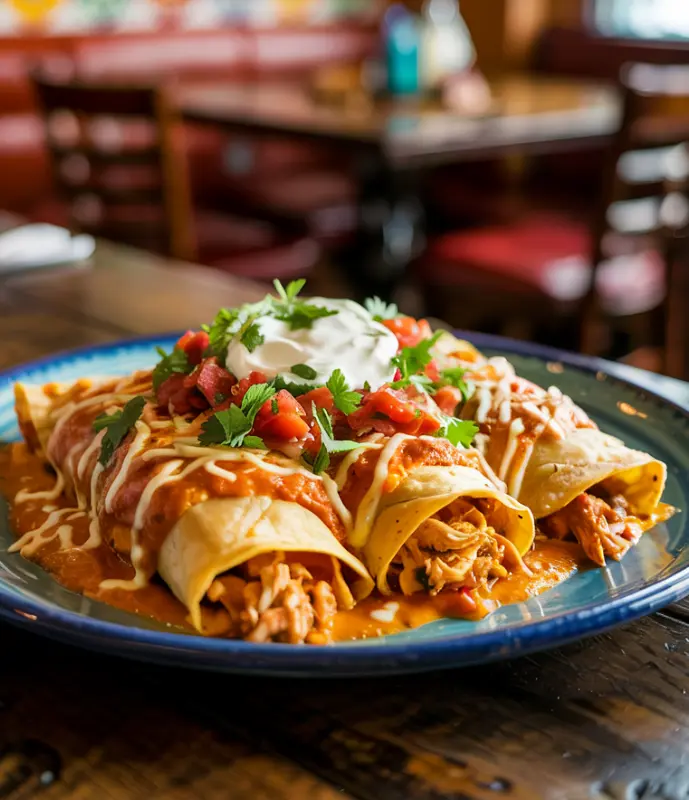
3. Chiles Rellenos
Chiles Rellenos features large poblano peppers that are charred, peeled, and carefully stuffed with cheese (traditionally queso fresco or Oaxaca cheese) or seasoned ground meat.
The stuffed peppers are then coated in a light egg batter and fried until golden brown, creating a delicate, soufflé-like exterior. Often served swimming in a mild tomato sauce, this dish showcases the Mexican love for combining different textures and temperatures in one plate. The poblano pepper provides a mild to medium heat that perfectly complements the creamy richness of the cheese filling.
When you cut into a chile relleno, the melted cheese stretches invitingly, while the combination of the crispy coating, tender pepper, and savory filling creates a memorable sensory experience.
This labor-intensive dish is often reserved for special occasions in Mexican homes, making it especially treasured among traditional recipes.
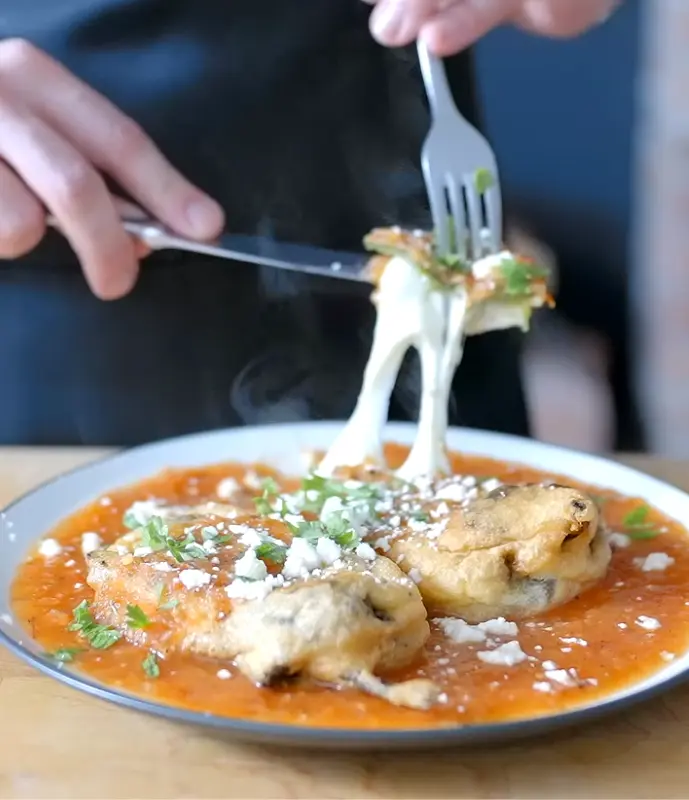
4. Mole Poblano
Mole Poblano stands as one of Mexico’s most complex and celebrated sauces, traditionally served over turkey or chicken. This rich, dark sauce contains an incredible array of ingredients—often more than 20—including multiple varieties of dried chilies, chocolate, nuts, seeds, spices, and sometimes fruit.
The preparation is labor-intensive, requiring toasting, grinding, and slow simmering to achieve the perfect consistency and flavor balance. When tasting mole poblano, you’ll first notice the depth of flavor with hints of chocolate, followed by warming spices like cinnamon and clove, and finally, a mild chile heat that lingers pleasantly.
The sauce has a velvety texture that coats the meat perfectly, while the sprinkle of sesame seeds on top adds a subtle crunch. Originating from Puebla, this dish exemplifies the blending of pre-Hispanic and European culinary traditions and is often served at important celebrations and weddings.
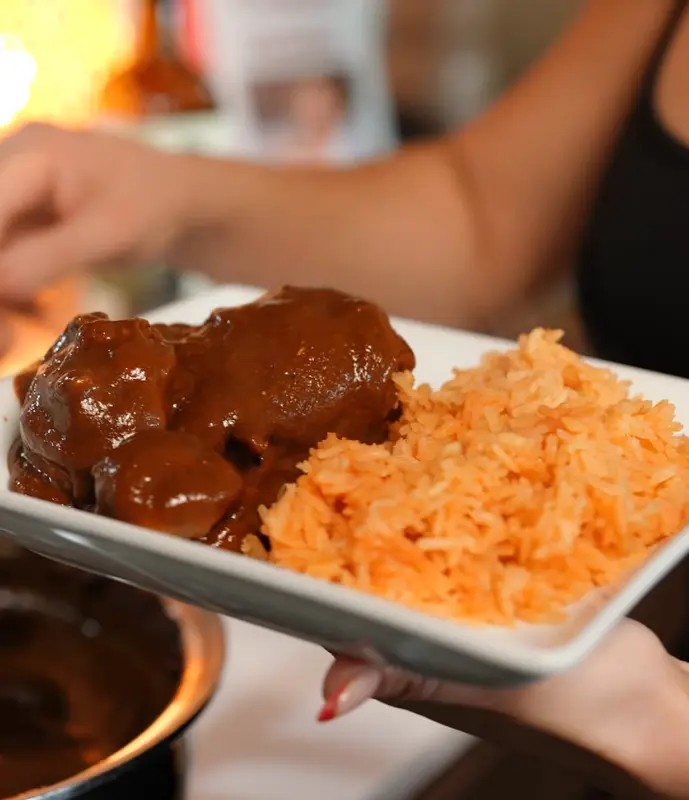
5. Guacamole
Guacamole represents Mexican cuisine at its freshest and most vibrant, centering around the creamy richness of perfectly ripened avocados.
This beloved dip begins with mashed avocados combined with finely chopped white onions, fresh cilantro, jalapeño or serrano peppers, a splash of lime juice, and a pinch of salt. The preparation typically involves using a molcajete (traditional stone mortar and pestle) to achieve the ideal texture—slightly chunky rather than completely smooth.
When made properly, guacamole offers a perfect balance of creamy, tangy, and spicy flavors, with each ingredient contributing to the overall sensory experience without overpowering the delicate taste of the avocado.
While commonly served as a dip with tortilla chips, guacamole also functions as a versatile condiment for tacos, tostadas, and grilled meats. This dish traces its origins to the Aztecs, who called it “ahuaca-mulli” (avocado sauce), making it one of Mexico’s truly pre-Hispanic culinary treasures.

6. Pozole
Pozole is a traditional Mexican soup or stew that has been central to ceremonial occasions for centuries. The foundation of this hearty dish is hominy—large corn kernels that have been treated with an alkaline solution to remove the hull—simmered with meat (typically pork) and flavored with garlic, onions, and Mexican oregano.
Pozole comes in three main varieties based on the chile used: rojo (red), verde (green), or blanco (white, without chile). What makes pozole special is not just the rich, savory broth but also the array of garnishes served alongside it.
Diners customize their bowls with shredded cabbage or lettuce, radishes, onion, lime, chile peppers, and oregano, creating a personalized flavor profile with each serving. The hominy provides a unique texture and subtle sweetness that balances the savory elements of the broth.
This dish offers a warming, comforting experience with layers of flavor that develop as you eat, making it especially popular during holidays and family gatherings throughout Mexico.
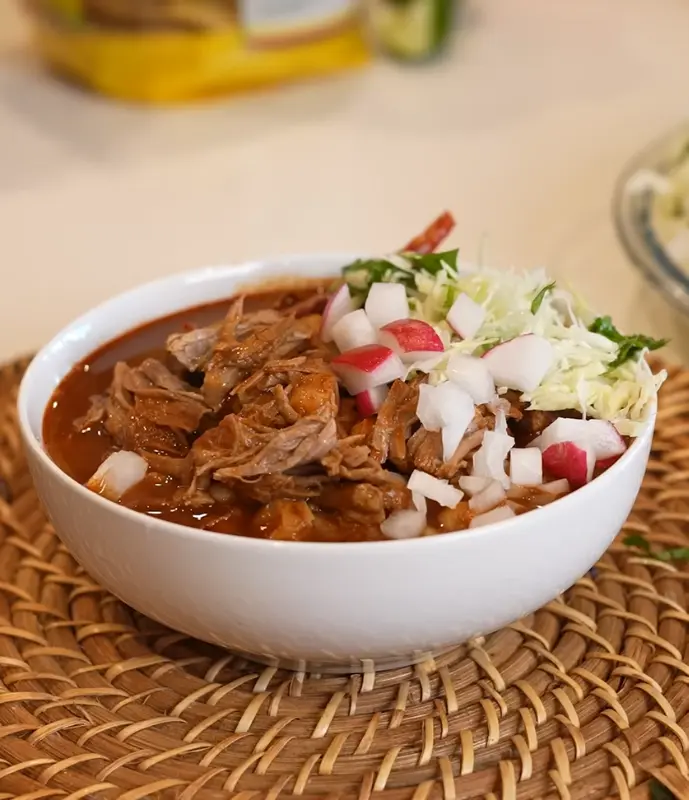
7. Chilaquiles
Chilaquiles represent the perfect marriage of simplicity and satisfaction in Mexican breakfast cuisine. This morning staple features lightly fried corn tortilla pieces simmered in either red (rojo) or green (verde) salsa until they soften slightly while still maintaining some texture.
Typically topped with crema, queso fresco, sliced onions, and sometimes fried eggs or shredded chicken, chilaquiles offer a wonderful contrast of flavors and textures in each bite. The tortilla chips absorb the salsa, creating tender bites punctuated by still-crisp edges, while the cool cream and tangy cheese balance the heat from the salsa.
What makes chilaquiles particularly special is how they transform simple, often leftover ingredients into a crave-worthy dish that’s both comforting and energizing. The dish varies significantly by region—in some areas, the chips remain crispier, while in others, they’re cooked until much softer.
This adaptable recipe showcases Mexican cuisine’s genius for creating extraordinary flavors from ordinary ingredients.

8. Tamales
Tamales are one of Mexico’s most ancient dishes, with a history stretching back thousands of years to Mesoamerican civilizations. These portable parcels consist of masa (corn dough) surrounding various fillings, all wrapped in corn husks or banana leaves and steamed until firm yet tender.
The filling variations are endless—from savory options like chicken with mole or pork in salsa verde to sweet versions filled with fruits, chocolate, or cinnamon. The masa itself can be plain or enhanced with lard for richness and baking powder for lightness.
What makes tamales special is the contrasting textures: the soft, slightly sweet masa exterior gives way to flavorful, often more intensely seasoned fillings. Making tamales is traditionally a communal activity called a “tamalada,” where family members gather to prepare large batches for celebrations and holidays.
This labor-intensive process reflects the dish’s important cultural role in Mexican family life and festive traditions, particularly during Christmas and Day of the Dead celebrations.
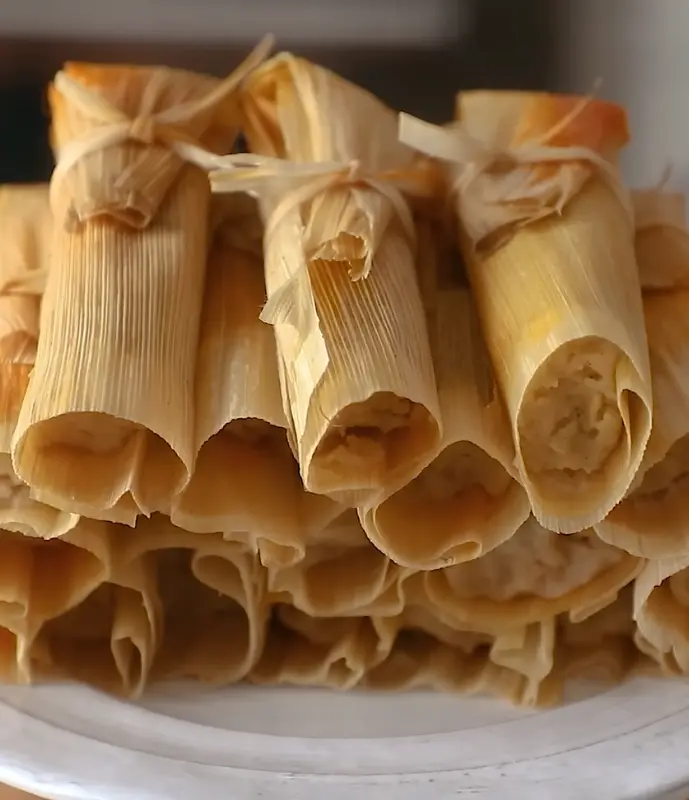
9. Chiles en Nogada
Chiles en Nogada stands as one of Mexico’s most patriotic dishes, deliberately featuring the colors of the Mexican flag—green poblano peppers, white walnut sauce, and red pomegranate seeds.
This seasonal delicacy is particularly popular around Mexican Independence Day celebrations in September. The dish consists of roasted poblano chiles stuffed with a picadillo mixture of ground meat, dried fruits, and spices, then covered with a creamy walnut sauce and garnished with fresh pomegranate arils and parsley.
The flavor profile is extraordinarily complex, combining the mild heat of the chile with sweet, savory, and aromatic elements from the filling, all tempered by the rich, slightly sweet walnut sauce.
Each bite offers a unique combination of temperatures, textures, and flavors—warm pepper, hearty filling, cool sauce, and the burst of juice from the pomegranate seeds.
This elegant dish originated in Puebla in the 1820s and represents the sophisticated blending of indigenous and European ingredients that characterizes much of Mexico’s finest cuisine.

10. Carnitas
Carnitas, which translates to “little meats,” exemplifies Mexican cuisine’s masterful approach to slow cooking. This dish from Michoacán features pork (traditionally a whole pig) that’s simmered for hours in its own fat until it develops a perfect contrast of textures—crispy exterior and tender, succulent interior.
The cooking process typically involves copper pots called cazos and includes orange peel, garlic, and spices that infuse the meat with subtle aromatics without overwhelming the pork’s natural flavor.
Once cooked, the meat is chopped and often briefly fried to enhance its crispy edges before being served on corn tortillas with simple accompaniments like chopped onions, cilantro, salsa, and a squeeze of lime.
What makes carnitas special is how the slow cooking method transforms tough cuts of meat into something extraordinarily flavorful, with each bite offering a perfect combination of crisp edges and meltingly tender interior.
The dish celebrates pork’s rich flavor while demonstrating Mexican cuisine’s patience and precision with cooking techniques.
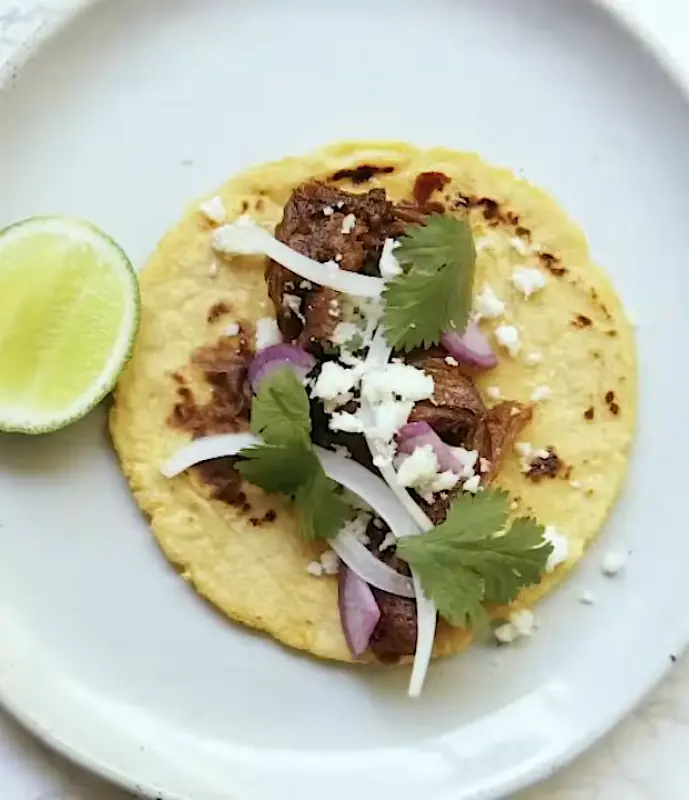
11. Quesadillas
Quesadillas represent Mexican comfort food at its most accessible, consisting of corn or flour tortillas filled with cheese and sometimes other ingredients, then folded and heated until the cheese melts.
Despite their apparent simplicity, authentic Mexican quesadillas differ significantly from their American counterparts—they’re often made with corn tortillas and Oaxaca cheese, which stretches beautifully when melted.
Regional variations abound: in Mexico City, quesadillas might not contain cheese unless specified, instead featuring fillings like huitlacoche (corn fungus), flor de calabaza (squash blossoms), or mushrooms.
The tortilla is typically cooked on a comal (flat griddle) until crispy on the outside while remaining pliable enough to fold without breaking.
What makes a perfect quesadilla is the contrast between the slightly crunchy tortilla and the creamy, melted filling, enhanced by fresh salsas that add brightness and heat.
This versatile dish serves as both a quick snack and a hearty meal component throughout Mexico.

12. Tostadas
Tostadas transform ordinary ingredients into a textural masterpiece that’s both practical and delicious. Beginning as a way to use tortillas that are too stale for tacos, tostadas feature a flat, crispy fried or baked corn tortilla that serves as a crunchy foundation for various toppings.
Typically, a layer of refried beans is spread first to help other ingredients adhere, followed by meat or seafood, lettuce, crema, queso fresco, salsa, and sometimes avocado, creating a towering edible platform.
What makes tostadas special is their perfect balance of textures—the satisfying crunch of the tortilla base contrasts with soft, creamy elements and fresh, crisp toppings.
Popular variations include tostadas de tinga (with shredded chicken in chipotle sauce), tostadas de ceviche (with lime-cured seafood), and vegetarian options loaded with nopalitos (cactus) or mushrooms.
Eating a tostada is something of an art form, requiring a technique that minimizes spillage while capturing all the flavors in each bite, making this dish both a culinary and tactile experience.
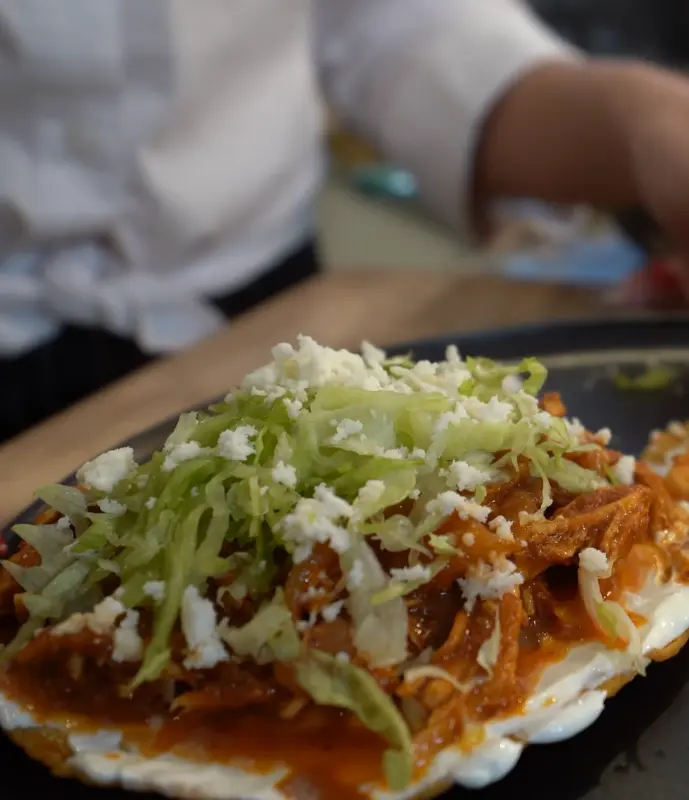
13. Elote (Mexican Street Corn)
Elote epitomizes Mexican street food culture—simple yet irresistible, this grilled corn on the cob transforms a humble vegetable into a crave-worthy treat.
Fresh corn is grilled over hot coals until lightly charred, bringing out its natural sweetness, then slathered with a layer of mayonnaise or Mexican crema that acts as a “glue” for the next layers of flavor.
It’s then rolled in cotija cheese (a crumbly, salty Mexican cheese similar to feta), sprinkled with chile powder or tajín (a seasoning blend of dried chilies, lime, and salt), and finished with a squeeze of fresh lime juice.
The combination creates a perfect storm of flavors and textures—sweet corn, creamy mayo, salty cheese, spicy chile, and acidic lime—that hits every taste bud. When eaten off the cob, the same preparation is called “esquites,” served in a cup and eaten with a spoon.
Elote vendors are fixtures at Mexican street markets, fairs, and neighborhood corners, their distinctive carts often recognizable by the steam rising from pots of boiling corn and the mouthwatering aroma of grilling ears.
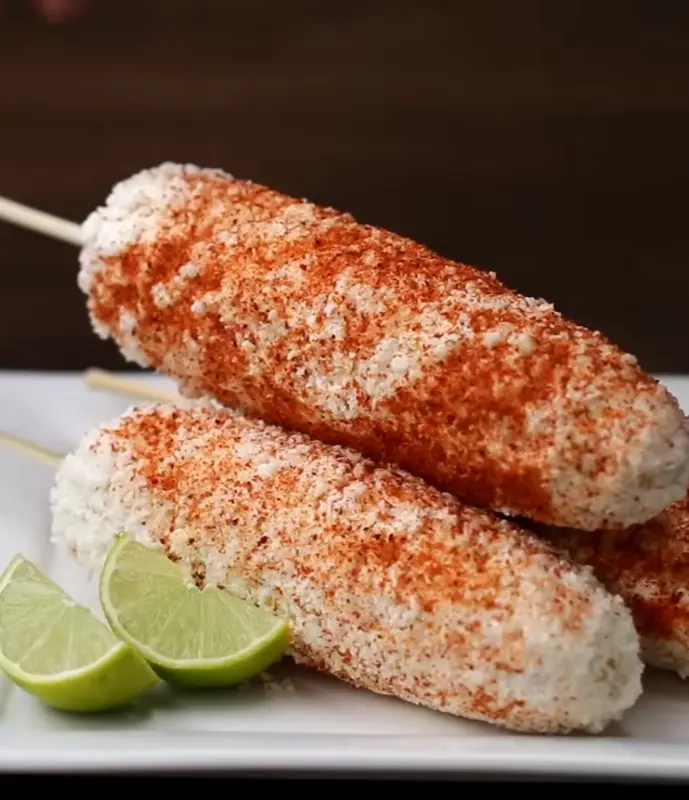
14. Sopes
Sopes showcase the versatility of corn masa in Mexican cuisine, featuring thick, hand-formed discs of masa with pinched edges that create a shallow bowl-like shape.
After being formed, they’re partially cooked on a comal, then typically lightly fried to create a base that’s crisp on the outside while remaining soft inside. The raised edges serve both practical and culinary purposes—they keep toppings contained while adding a textural contrast to the finished dish.
Traditional toppings include refried beans, crumbled cheese, lettuce, salsa, and a protein like shredded chicken, beef, or chorizo. What distinguishes sopes from similar masa-based dishes is their thickness and sturdiness, which allows them to support hearty toppings without becoming soggy.
The experience of eating a sope involves appreciating how the earthy flavor of the masa complements the savory toppings, with the contrast between the crisp exterior and tender interior of the base adding dimensional texture.
These hand-held treats demonstrate the ingenuity of Mexican street food, transforming simple ingredients into satisfying, complete meals.
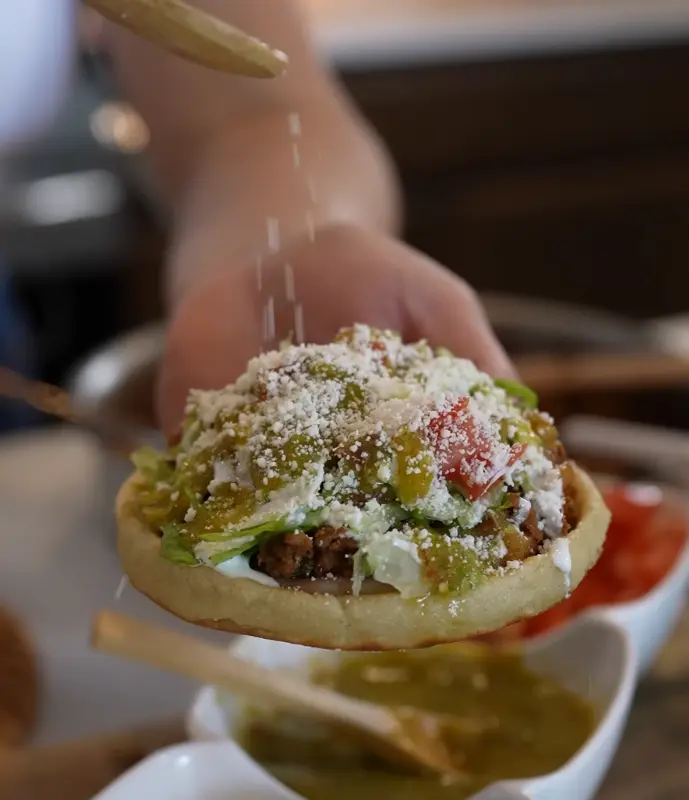
15. Tlayudas
Tlayudas represent Oaxacan cuisine at its most distinctive, featuring enormous tortillas (up to 16 inches in diameter) that are partially dried to create a unique texture that’s both crispy and chewy.
These large, leather-like tortillas are traditionally cooked over coals or a comal, then topped with a thin layer of rendered pork fat (asiento) or refried beans, Oaxacan string cheese (quesillo), lettuce or cabbage, avocado, and meat—often tasajo (thin beef steak), cecina (pork), or chorizo. Sometimes called “Oaxacan pizzas,” tlayudas can be served flat or folded in half and are typically large enough to serve as a complete meal.
What makes them special is the contrasting textures—the crisp yet pliable base, melted cheese, and fresh toppings—along with the smoky flavor imparted by traditional cooking methods.
The dish exemplifies Oaxaca’s renowned culinary traditions, incorporating indigenous ingredients and techniques with influences from other regions.
In Oaxaca, tlayudas are especially popular as late-night fare, with vendors setting up charcoal grills outside restaurants and nightspots to satisfy hungry revelers.

16. Cochinita Pibil
Cochinita Pibil represents the culinary treasures of the Yucatán Peninsula, featuring pork marinated in acidic citrus juice—traditionally sour orange—and flavored with achiote paste, which gives the dish its characteristic deep red-orange color.
This preparation method reflects both Maya heritage and European influences that characterize Yucatecan cuisine.
Traditionally, the marinated meat is wrapped in banana leaves and slow-roasted in a pit oven (pib in Mayan), allowing the meat to become incredibly tender while absorbing the flavors of the marinade and the subtle essence of the banana leaves.
The result is meat so tender it falls apart easily, with a unique flavor profile that’s simultaneously tangy, earthy, and subtly sweet with aromatic undertones.
Cochinita pibil is typically served with pickled red onions, which cut through the richness of the pork with their bright acidity, and habanero salsa for those who enjoy heat.
Most commonly enjoyed in tacos or tortas, this dish demonstrates how pre-Hispanic cooking techniques continue to influence modern Mexican cuisine, creating flavors that are deeply rooted in regional history.

17. Huevos Rancheros
Huevos Rancheros exemplifies Mexican breakfast at its most satisfying, featuring crisp tortillas topped with fried eggs and smothered in a vibrant tomato-chile sauce. Originally developed as a hearty mid-morning meal for ranch hands (hence the name “rancher’s eggs”), this dish provides substantial energy for a day of physical work.
The base consists of lightly fried corn tortillas that retain some pliability while developing crispy edges. The eggs are typically cooked sunny-side up, allowing the runny yolks to mix with the sauce when broken.
The ranchero sauce itself varies by region but generally includes tomatoes, onions, jalapeños or serrano peppers, and garlic, cooked down to a thick consistency with hints of smokiness and heat.
Common accompaniments include refried beans, avocado slices, queso fresco, and sometimes fried potatoes.
What makes this dish special is how the different elements come together—the rich egg yolk mingling with the acidic sauce, the crisp tortilla soaking up the flavors, and the fresh garnishes adding brightness and texture to each bite.
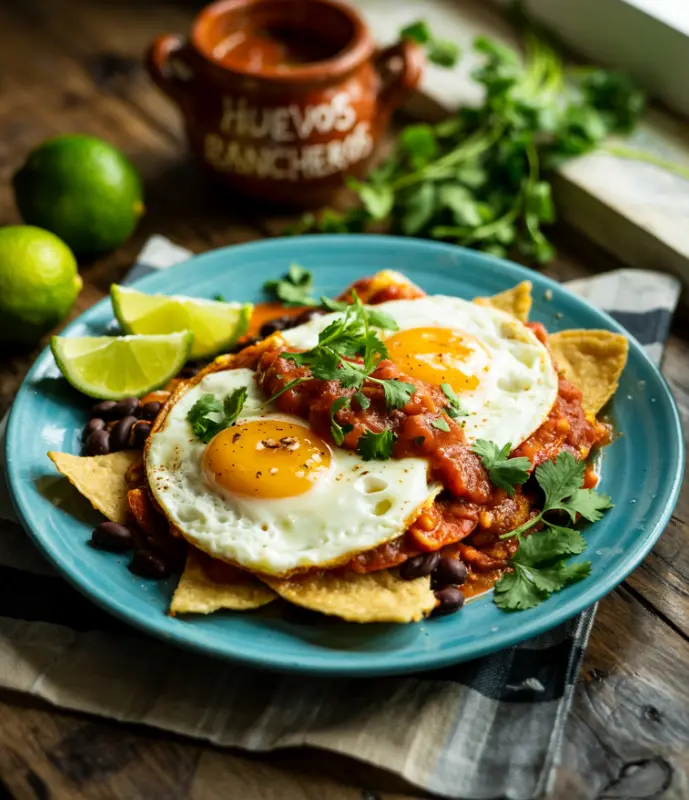
18. Birria
Birria originated in Jalisco as a celebratory dish of goat meat slowly stewed in a complex chile-based broth, but has recently gained international popularity, particularly in its beef and quesabirria taco variations.
The meat is marinated in a mixture of dried chiles (commonly guajillo, ancho, and cascabel), vinegar, and spices before being slowly cooked until fall-apart tender. What makes birria exceptional is its consommé—the rich, intensely flavored broth that develops during cooking, which serves both as part of the dish and as a dipping sauce for tacos.
Traditional birria is served in bowls with the meat submerged in consommé, garnished with chopped onion, cilantro, and lime, while modern iterations often feature the meat in tacos that are dipped in the consommé and griddled until crispy, sometimes with cheese added (quesabirria).
The flavor profile is deeply savory with subtle heat and aromatic notes from spices like cinnamon, cloves, and cumin. This dish exemplifies Mexican cuisine’s mastery of slow-cooking techniques that transform tough cuts of meat into tender delicacies with complex flavors.
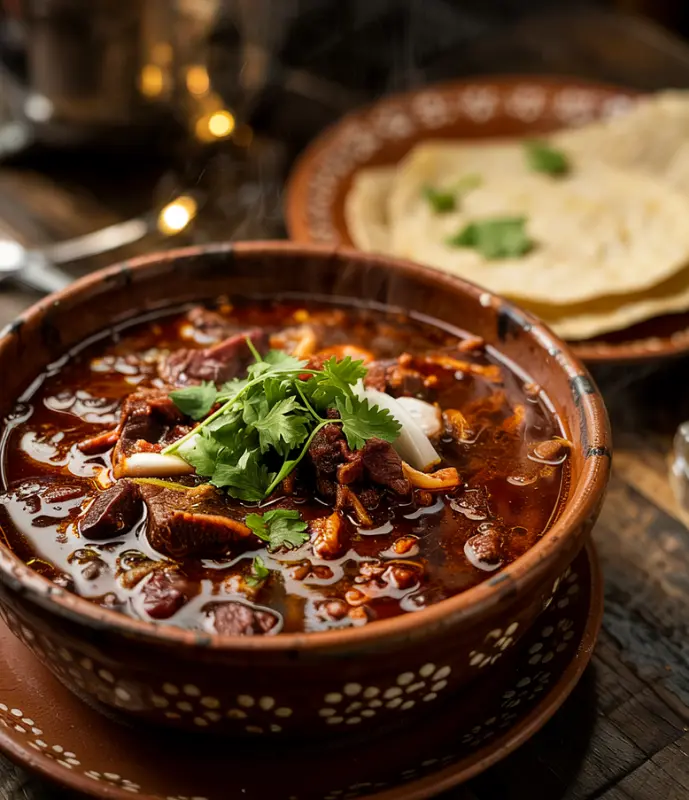
19. Ceviche
Ceviche showcases Mexico’s coastal cuisine at its freshest, featuring raw seafood “cooked” by marinating it in citrus juice—typically lime—which denatures the proteins in a process similar to heat cooking.
Mexican ceviche typically includes fresh fish (like sea bass or snapper), shrimp, or a combination of seafood, diced and mixed with lime juice, chopped tomatoes, onions, jalapeños or serrano peppers, and cilantro. Regional variations abound: on the Pacific coast, ceviche might include mangoes or coconut, while Gulf coast versions might incorporate olives or capers, reflecting Spanish influences.
What makes Mexican ceviche distinct is its balance of flavors and textures—the tender seafood maintains a delicate sweetness that contrasts with the acidic lime and the crunch of fresh vegetables. The dish is often served with tortilla chips or tostadas, allowing diners to scoop up the flavorful mixture, and sometimes avocado is added for creaminess.
Ceviche embodies Mexico’s knack for fresh, vibrant flavors and demonstrates how simple ingredients can create sophisticated taste experiences when properly balanced.
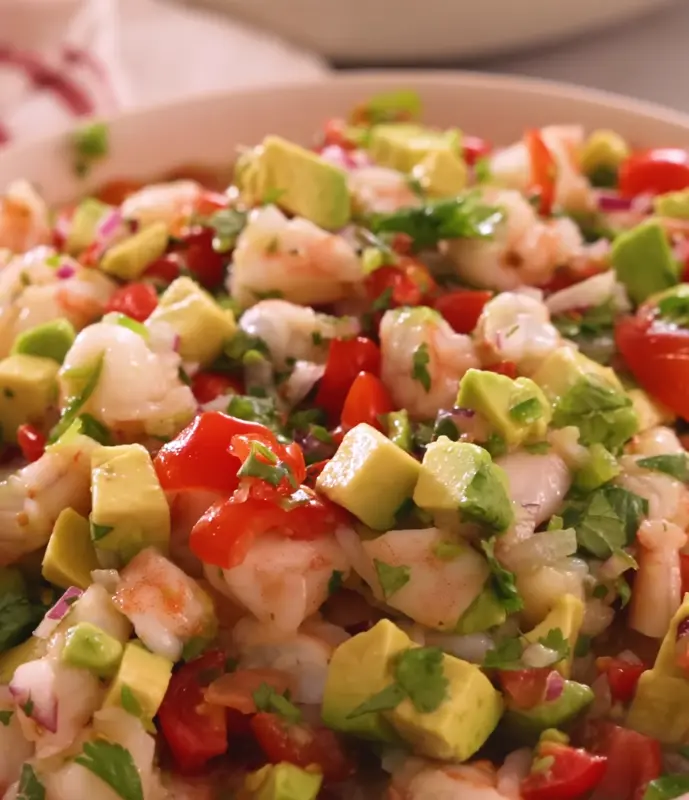
20. Chiles Toreados
Chiles Toreados represent Mexican cuisine’s reverence for chilies in their purest form—whole serrano or jalapeño peppers blistered on a hot comal or griddle until their skins char and pucker. This simple preparation coaxes complex flavors from the peppers as they soften and caramelize, developing a smoky dimension that complements their natural heat.
The chilies are typically tossed with salt and sometimes lime juice after cooking, and occasionally sliced onions are added to the mix. What makes chiles toreados special is how the charring process tames some of the raw pepper’s aggressive heat while bringing out its underlying fruity notes, creating a more nuanced spicy experience.
These blistered chilies are served as a side dish or condiment, allowing diners to adjust the heat level of their meal by taking bites between other foods.
In Mexican taquerias, a plate of chiles toreados often arrives automatically with orders, serving as both garnish and challenge—eating them straight is a testament to one’s heat tolerance, while their oils add dimension when used to flavor other components of the meal.

21. Menudo
Menudo stands as one of Mexico’s most celebrated hangover remedies and a beloved weekend tradition in many households. This robust soup features tripe (beef stomach) slowly simmered with a chile-based broth, hominy, and an aromatic blend of spices including oregano, bay leaves, and garlic.
The long cooking time—often 4-7 hours—is essential for transforming the tripe into tender morsels while developing the broth’s deep flavors. Regional variations abound: northern Mexican versions typically use a red chile base, while “menudo blanco” without chiles is common in Sonora.
The soup is customarily served with a variety of accompaniments that diners add according to preference—lime wedges, chopped onions, cilantro, dried oregano, and chile flakes—allowing each person to customize their bowl’s final flavor profile.
What makes menudo special beyond its rich taste is its cultural significance; preparation often begins very early in the morning on weekends, with the dish ready in time for a late breakfast or lunch, bringing family members together around this labor-intensive but deeply satisfying communal meal.
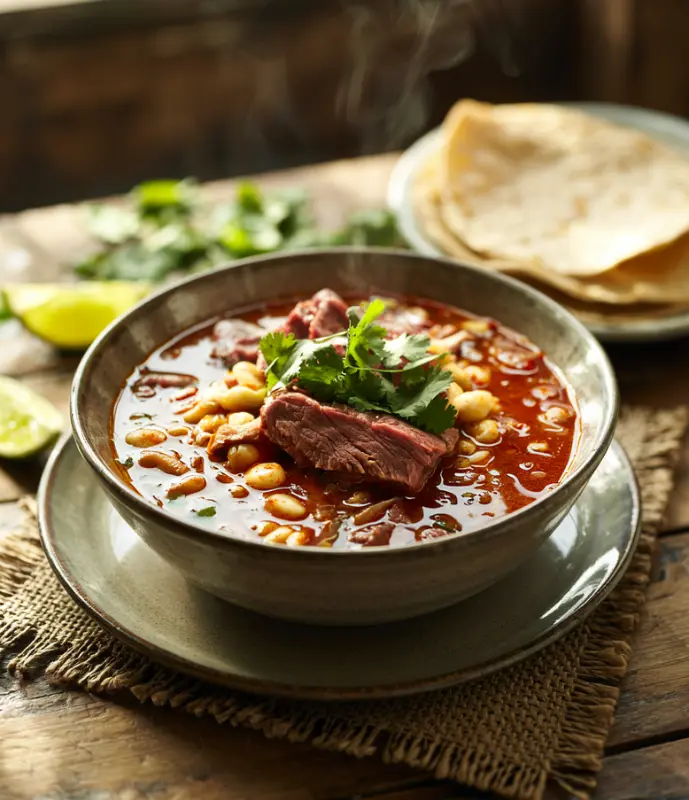
22. Enfrijoladas
Enfrijoladas transform humble ingredients into a satisfying comfort food by bathing lightly fried corn tortillas in a smooth, savory black or pinto bean sauce. This dish exemplifies Mexican cuisine’s ability to create depth of flavor from everyday pantry staples.
The bean sauce typically incorporates onions, garlic, and chiles, then gets blended to a velvety consistency that coats the tortillas perfectly. The softened tortillas are usually filled with simple ingredients like queso fresco or shredded chicken before being folded and completely covered with more bean sauce.
Toppings might include Mexican crema, avocado slices, crumbled cheese, and minced onions, adding contrasting textures and flavors to the creamy beans.
What makes enfrijoladas special is their heartiness and the earthy depth of the bean sauce, which provides a satisfying alternative to more common tomato or chile-based enchilada sauces.
This dish highlights beans—a staple of Mexican cooking since pre-Hispanic times—in a format that elevates them from side dish to the star of the meal, demonstrating the cuisine’s resourcefulness and respect for indigenous ingredients.

23. Michelada
Michelada represents Mexican ingenuity in the beverage category, transforming ordinary beer into a complex, refreshing drink that balances savory, spicy, and tangy flavors.
This beer cocktail begins with a salt and chile powder rim on a cold glass, which is then filled with a mixture of lime juice, various sauces (typically Worcestershire, hot sauce, and sometimes soy sauce or Maggi seasoning), and spices before being topped with Mexican lager beer.
Regional variations abound—some versions include clamato or tomato juice (sometimes called “Michelada preparada”), while others focus more on the citrus and spice elements without the tomato base.
What makes micheladas special is how they transform the beer drinking experience, adding complexity and refreshment that particularly complements Mexican cuisine’s bold flavors.
The drink is especially popular during hot weather and is often consumed as a hangover remedy, with the salt replacing electrolytes and the spices stimulating the palate.
The michelada exemplifies Mexican culture’s knack for creating distinctive flavor combinations that might seem unusual on paper but work harmoniously in practice.

24. Gorditas
Gorditas (meaning “little fat ones”) feature thick masa cakes that are cooked on a comal and then split open to create a pocket for fillings—similar to pita bread but made from corn masa.
The dough is often mixed with lard for richness and sometimes incorporates mashed beans or chicharrón (pork cracklings) directly into the masa for additional flavor. Once cooked, the gordita develops a wonderful textural contrast: slightly crisp exterior giving way to a soft, steamy interior that cradles fillings like shredded meat, cheese, beans, or vegetable mixtures.
What makes gorditas special is their versatility and portability—substantial enough to serve as a meal yet convenient as a hand-held street food. Regional variations showcase local ingredients: in central Mexico, gorditas might be filled with chicharrón prensado (pressed pork rinds in sauce), while northern versions might feature shredded beef or chorizo.
The name aptly describes both their plump appearance and satisfying nature, as these stuffed masa cakes offer a more substantial alternative to tacos while still highlighting the essential corn foundation that characterizes so much of Mexican cuisine.

25. Tortas
Tortas demonstrate Mexico’s creative approach to sandwich-making, featuring crusty rolls (bolillos or teleras) filled with a carefully orchestrated combination of meats, cheeses, and condiments.
Unlike typical American sandwiches, tortas achieve their distinctive character through multiple layers of flavor and texture—refried beans spread on one side of the bread, mayonnaise on the other, followed by layers that might include avocado, tomato, onion, jalapeños, and various meats like breaded milanesa, ham, or chorizo.
Regional specialties include tortas ahogadas from Jalisco (drowned in spicy sauce), pambazo from Mexico City (bread dipped in red chile sauce before grilling), and tortas de tamales (yes, a tamale inside bread) for an intense carbohydrate experience.
What makes tortas special is their balanced architecture—each ingredient serves a purpose, from the creamy spreads that prevent sogginess to the precise arrangement of components that ensures every bite contains multiple flavors.
The bread itself is crucial, with a thin, crisp crust and soft interior that compresses slightly when eaten, keeping the fillings contained while absorbing their juices and flavors.

26. Aguachile
Aguachile represents coastal Mexican cuisine at its most vibrant, featuring extremely fresh raw shrimp marinated briefly in an intensely flavored mixture of lime juice, chilies, and salt. Unlike ceviche, which “cooks” seafood in citrus over a longer period, aguachile (literally “chile water”) is prepared and consumed almost immediately, preserving the shrimp’s delicate texture and sweet flavor while delivering a powerful punch of heat and acidity.
Originating in Sinaloa on Mexico’s Pacific coast, traditional aguachile uses small, spicy chiltepin or piquín chilies, though modern variations might incorporate jalapeños or serranos. The dish typically includes thinly sliced cucumber and red onion, which add refreshing crunch and sharp contrast to the tender shrimp.
What makes aguachile special is its uncompromising freshness and intensity—it’s a dish that showcases pristine ingredients with minimal intervention, allowing their natural qualities to shine through.
Often served with tostadas or saltine crackers to provide textural contrast and temper the heat, aguachile exemplifies Mexico’s coastal communities’ expertise in highlighting seafood at its peak of freshness.

27. Churros
Churros exemplify how Mexico has adapted and perfected culinary traditions from Spain to create distinctly Mexican treats. These ridged, elongated fried dough pastries feature a crisp exterior and tender interior, achieving their signature shape by being piped through a star-shaped nozzle before frying.
The dough itself is simple—typically containing only flour, water, salt, and sometimes butter—but the magic happens in the cooking process, where the ridges create extra surface area for the cinnamon-sugar coating to adhere.
What makes Mexican churros special is their serving style; while Spanish versions are often breakfast items served with hot chocolate for dipping, Mexican churros frequently appear as street snacks or festival treats, sometimes filled with dulce de leche, chocolate, or fruit preserves.
The perfect churro delivers a satisfying crunch when bitten, revealing a light, steamy interior that contrasts beautifully with the sweet, spiced coating. This beloved treat demonstrates how fried dough—a concept found in many world cuisines—takes on distinctive regional character through specific techniques, shapes, and serving contexts.
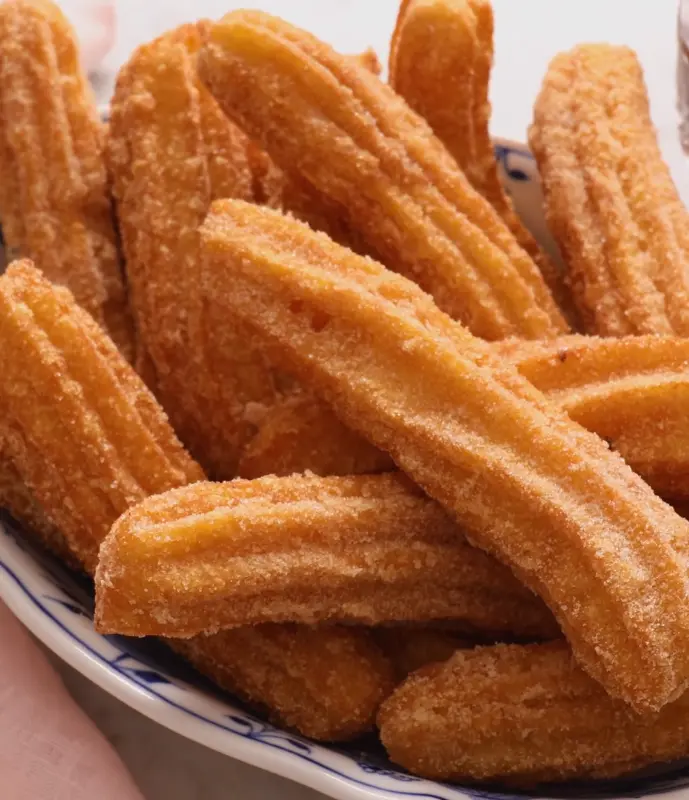
28. Flan
Flan represents the perfect marriage of European culinary technique and Mexican ingredients, resulting in a dessert that’s simultaneously simple and sophisticated.
This creamy caramel custard features a silky-smooth texture achieved by gently baking a mixture of eggs, milk, sugar, and vanilla in a water bath until just set. What distinguishes great flan is the perfect wobble—firm enough to hold its shape when unmolded but yielding effortlessly to a spoon.
The caramel layer, created by cooking sugar until it reaches a deep amber color before adding it to the mold, liquefies during baking to create a luscious sauce that cascades over the custard when served.
Mexican variations often incorporate distinct local ingredients like cinnamon, coconut, or cajeta (goat’s milk caramel). The contrast between the cool, smooth custard and the slightly bitter caramel creates a balanced dessert that’s rich without being cloying.
Flan’s presence at Mexican family celebrations highlights its special status in the culinary repertoire—a dish that requires care to prepare properly and is often passed down through generations with specific family techniques and proportions.
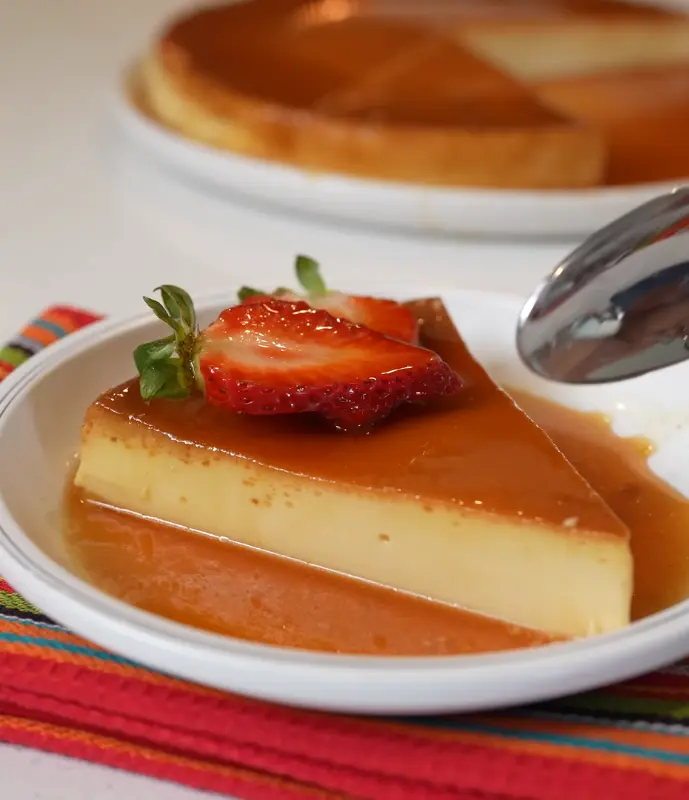
29. Barbacoa
Barbacoa exemplifies Mexico’s mastery of slow-cooking techniques, traditionally featuring meat (often whole sheep or goat) wrapped in maguey leaves and cooked in an underground pit for many hours until extraordinarily tender.
This ancient cooking method predates European contact, with the term “barbacoa” eventually giving rise to the English word “barbecue.” The pit cooking imparts a distinctive earthy, smoky flavor while the maguey leaves add subtle herbal notes.
Modern adaptations often use beef (particularly beef cheeks or cabeza) and may employ pressure cookers or slow cookers to approximate the traditional tenderness, though purists maintain that only pit-cooking produces authentic barbacoa.
What makes this dish special is how the long cooking process breaks down tough connective tissues while concentrating flavors, resulting in meat that can be shredded with minimal effort yet remains incredibly moist.
Typically served with simple accompaniments—cilantro, onions, lime, and salsa borracha (often made with pulque or beer)—barbacoa is frequently enjoyed as a weekend morning meal, with many regions having dedicated barbacoa restaurants that open only on weekends.

30. Mole Negro
Mole Negro from Oaxaca represents perhaps the most complex sauce in Mexican cuisine, containing upwards of 30 ingredients carefully balanced to create a dish that’s simultaneously sweet, savory, spicy, and bitter.
This sophisticated sauce includes multiple varieties of dried chilies, nuts, seeds, spices, herbs, bread or tortillas for thickening, and notably, chocolate—not for sweetness but to add richness and help balance the sauce’s other powerful flavors.
The preparation process is extraordinarily labor-intensive, involving toasting, roasting, grinding, and simmering ingredients separately before combining them into a harmonious whole that’s then cooked for hours to develop its characteristic depth.
What makes mole negro special is its unparalleled complexity—each spoonful reveals different flavor notes depending on what hits your palate first. The sauce appears almost black (hence “negro”) and has a velvety consistency that coats poultry or meat perfectly.
Traditionally served at significant celebrations and requiring days of preparation when made properly, mole negro exemplifies Mexican cuisine’s willingness to embrace intricate processes in pursuit of extraordinary flavor development.
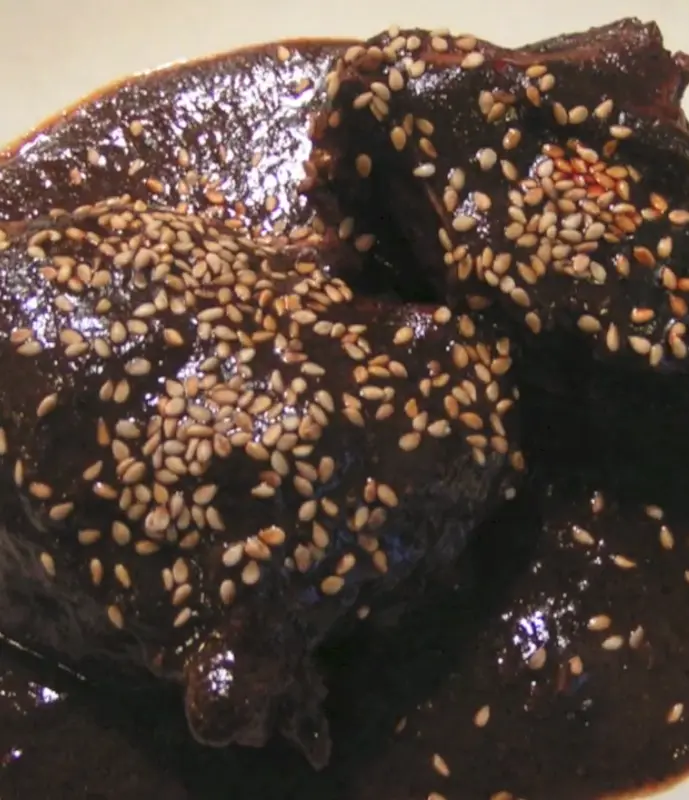
31. Huaraches
Huaraches are oval-shaped masa cakes named for their resemblance to the sandals (huaraches) worn by rural Mexican workers. These thick, elongated masa bases are pinched at the edges to create a slight ridge that contains toppings.
After being formed by hand, the masa is griddled until firm yet tender, then topped with a thin layer of refried beans, your choice of protein (often shredded beef, chorizo, or al pastor meat), crumbled cheese, shredded lettuce, diced onions, and salsa.
What makes huaraches special is their substantial nature—thicker than tortillas but not as bulky as gorditas—providing the perfect foundation for a hearty combination of toppings while maintaining the essential corn flavor that anchors Mexican cuisine.
The textural contrast between the slightly crisp exterior of the masa base and its tender interior creates a satisfying eating experience that’s enhanced by the varied toppings.
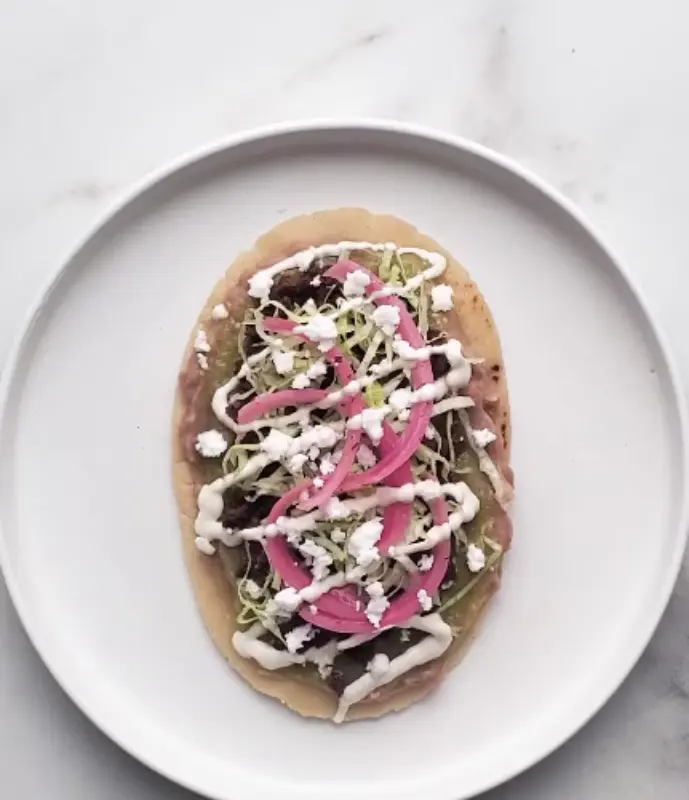
32. Pescado a la Veracruzana
Pescado a la Veracruzana exemplifies Mexico’s coastal cuisine, featuring white fish fillets cooked in a vibrant sauce that reflects the cultural fusion of Indigenous, Spanish, and Caribbean influences in Veracruz.
The distinctive sauce combines tomatoes, olives, capers, jalapeños, garlic, and herbs—ingredients that showcase the Spanish influence on this Gulf coast region. Traditionally prepared with red snapper or similar firm white fish, the dish highlights the delicate flavor of fresh seafood while complementing it with the tangy, slightly briny sauce.
What makes this preparation special is how it balances acidity and spice without overwhelming the fish, creating a bright, flavorful dish that’s simultaneously sophisticated and straightforward.
The sauce’s Mediterranean elements reflect Veracruz’s historical position as Mexico’s principal port, where European ingredients first entered Mexican cuisine, making this dish an important example of early fusion cooking that has become a classic in its own right.

33. Tlacoyos
Tlacoyos feature diamond-shaped or oval masa cakes that are distinctive for having fillings sealed inside the dough before cooking, rather than added afterward.
Traditionally stuffed with refried beans, requeson (similar to ricotta cheese), or fava beans, these pre-Hispanic antecedents to modern Mexican street food are cooked on a comal until the exterior develops a slight crust while the interior remains tender. Once cooked, tlacoyos are typically topped with nopales (cactus), crumbled cheese, cilantro, and salsa.
What makes them special is their efficiency—the filling incorporated directly into the masa means they’re less messy to eat while delivering multiple flavors in each bite. The blue corn masa often used for tlacoyos adds both visual appeal and a slightly sweeter, nuttier flavor than yellow or white corn varieties.
This street food staple demonstrates the ingenious pre-Hispanic cooking techniques that continue to influence Mexican cuisine today, creating satisfying meals from simple, nutritious ingredients.
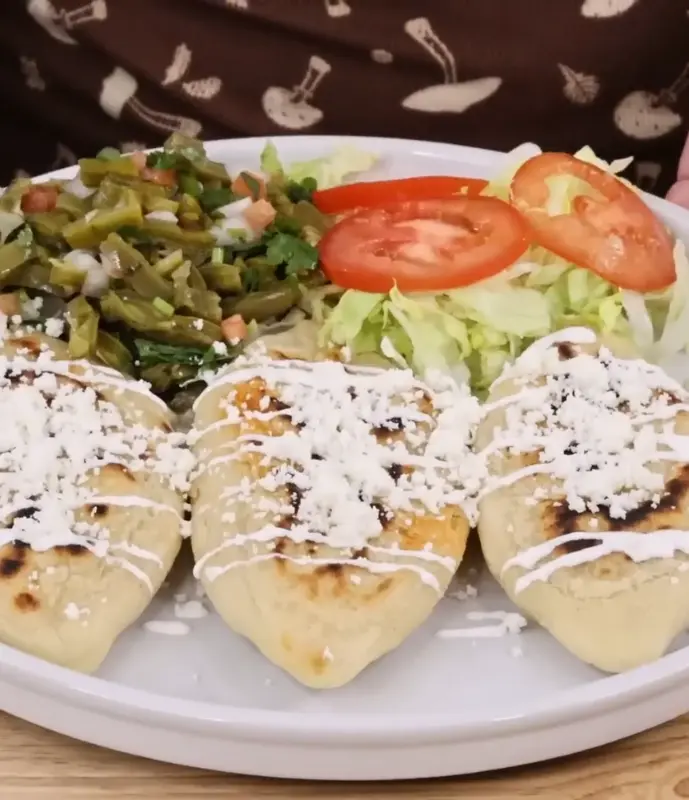
34. Rajas con Crema
Rajas con Crema showcases poblano chiles in their most comforting form—roasted until the skins blister, peeled, and cut into strips (rajas) before being simmered with onions, corn, Mexican crema, and cheese.
This seemingly simple dish delivers complex flavors through careful preparation of its few ingredients. The poblanos provide mild heat and smoky notes from roasting, while the cream mellows their intensity and creates a luxurious sauce that coats each pepper strip. The sweetness of corn kernels and the slight caramelization of sautéed onions add dimension to the dish.
What makes rajas con crema special is its versatility—it can serve as a satisfying vegetarian main course, a flavorful side dish, or a filling for tacos, tortas, or tamales. The dish demonstrates Mexican cuisine’s ability to create deeply flavored, satisfying meals from relatively humble ingredients through thoughtful preparation techniques that maximize each component’s contribution to the whole.
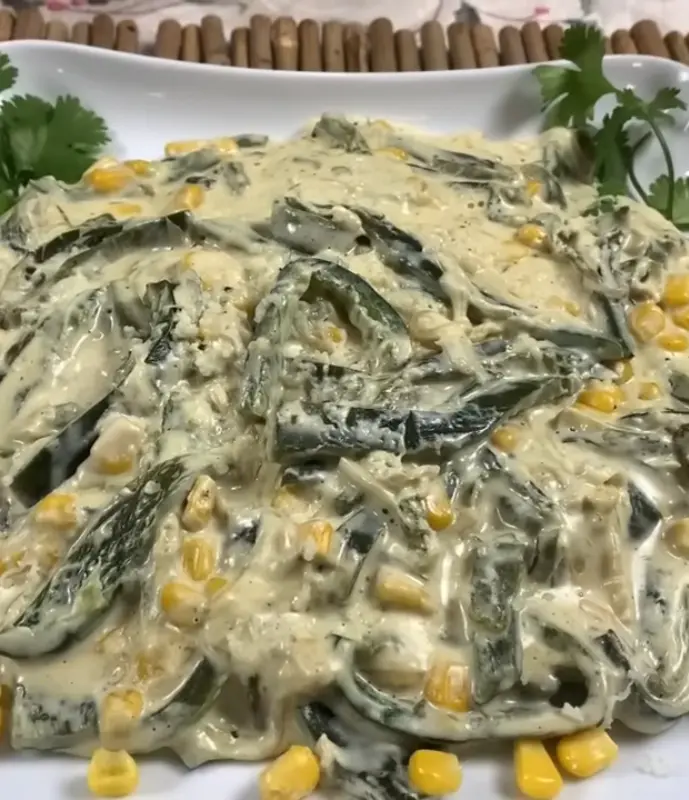
35. Caldo de Pollo
Caldo de Pollo represents Mexican comfort food at its most nourishing, featuring chicken pieces slowly simmered with vegetables in a flavorful broth that’s clear yet deeply satisfying. This homestyle soup typically includes large pieces of carrots, potatoes, chayote squash, and occasionally rice or pasta, making it a complete meal in a bowl.
What distinguishes Mexican chicken soup from versions found in other cuisines is its seasoning profile—often incorporating whole sprigs of fresh cilantro, jalapeños, and sometimes a squeeze of lime juice at serving—and the fact that the chicken is typically cooked on the bone for maximum flavor development.
Served with warm corn tortillas on the side for dipping into the broth, caldo de pollo is traditionally enjoyed by spooning up vegetables and chicken while sipping the broth directly from the bowl.
This restorative soup is particularly valued as a remedy for colds and general malaise, with many Mexican families having their own specific variations passed down through generations.
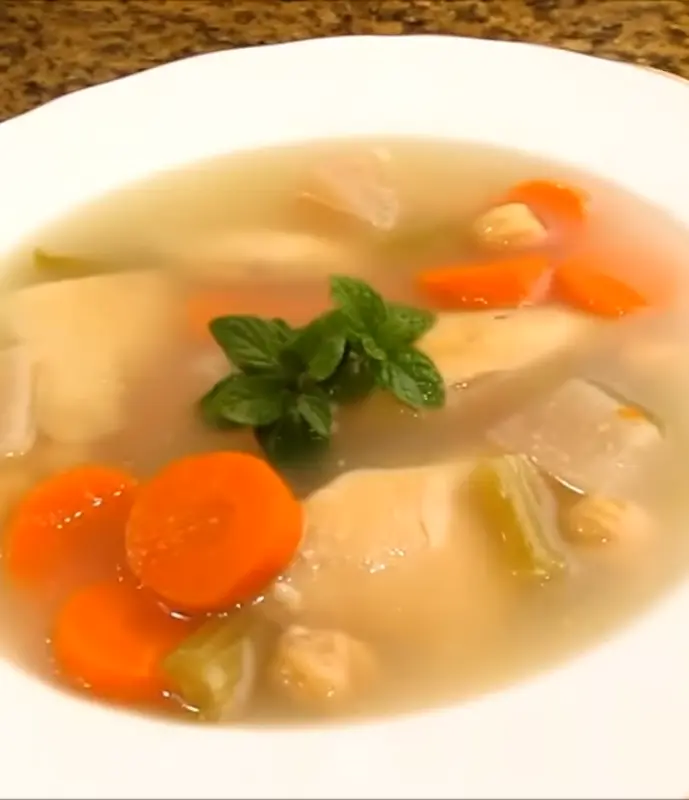
36. Arroz con Leche
Arroz con Leche offers Mexican comfort in dessert form, featuring rice slowly simmered in milk until the grains become plump and tender while releasing their starch to create a naturally creamy texture.
This rice pudding is typically flavored with cinnamon sticks, vanilla, and sometimes star anise or citrus zest, creating a warm aromatic profile that complements the dish’s subtle sweetness. Unlike some international versions of rice pudding, Mexican arroz con leche often maintains distinct rice grains rather than cooking them until they break down completely.
What makes this dessert special is its simultaneous simplicity and depth of flavor—achieved not through complexity of ingredients but through the patient, slow cooking process that allows the rice to absorb the milk and spices fully.
Often garnished with a sprinkle of ground cinnamon, raisins, or fresh fruit, this dessert demonstrates how Mexican cuisine transforms basic pantry staples into comforting treats that appeal across generations.
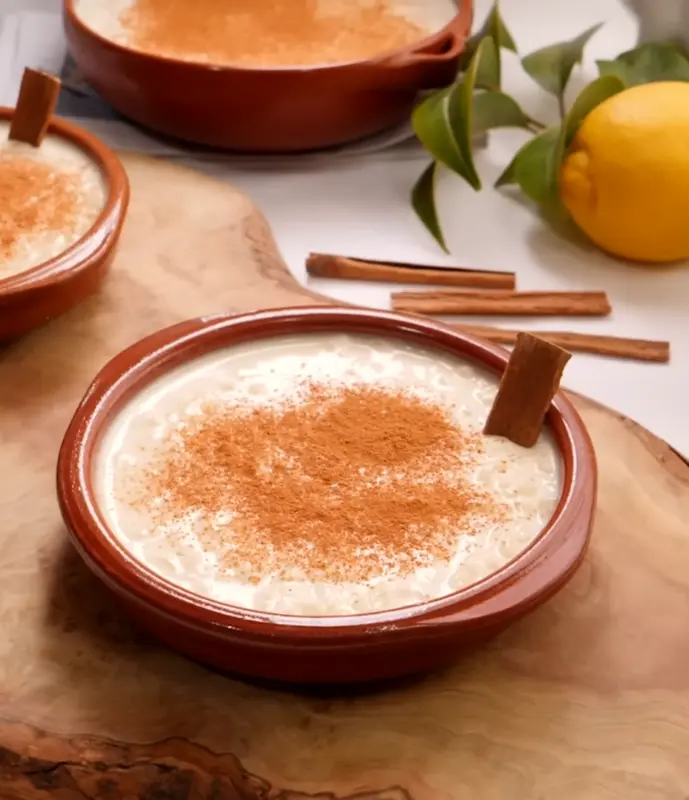
37. Camarones a la Diabla
Camarones a la Diabla delivers on its devilishly spicy name, featuring large shrimp cooked in an intensely flavored chile sauce that’s designed to bring heat-seekers to their limits.
The sauce typically incorporates multiple dried chiles—often including chile de árbol, guajillo, and sometimes chipotle—creating a complex spice profile that’s about more than just heat, with smoky and fruity undertones complementing the fiery punch. Garlic, onions, and sometimes a touch of Mexican oregano round out the flavors, while butter adds richness that helps temper (slightly) the chiles’ intensity.
What makes this dish special is how it showcases both the range of chile flavors in Mexican cuisine and the perfect cooking of the shrimp, which remain tender and sweet as a counterpoint to the aggressive sauce.
Typically served with white rice to help cool the palate between bites, camarones a la diabla exemplifies Mexican coastal cuisine’s bold approach to seafood preparation.
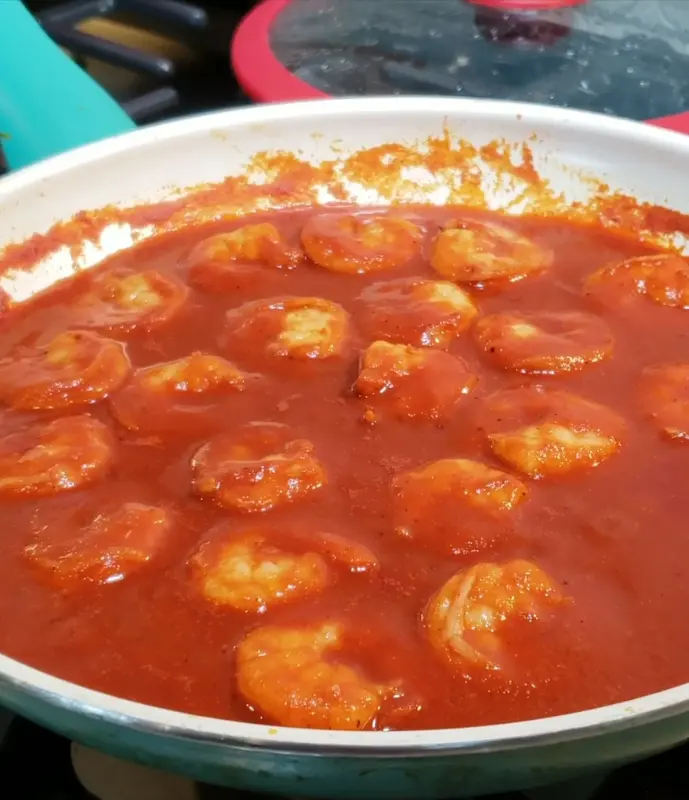
38. Pan de Muerto
Pan de Muerto is much more than just a sweet bread—it’s a cultural symbol associated with Day of the Dead celebrations, embodying the Mexican approach to honoring ancestors with joy rather than sorrow.
This slightly sweet, orange-scented bread is distinguished by its decorative shapes, which include bones arranged in a circle on top (representing the circle of life) and a small knob at the center (symbolizing a skull or teardrops).
The dough typically incorporates orange blossom water or orange zest and anise seeds, creating a distinctive aromatic profile that’s immediately recognizable to those familiar with Mexican bakeries. After baking, the bread is brushed with melted butter and dusted generously with sugar.
What makes pan de muerto special is its cultural significance—it’s placed on ofrendas (altars) during Día de los Muertos celebrations as an offering to departed souls, who are believed to enjoy its essence and aroma.
Each region has its own variation, making this bread both a delicious treat and an important cultural artifact that connects Mexicans to their heritage.
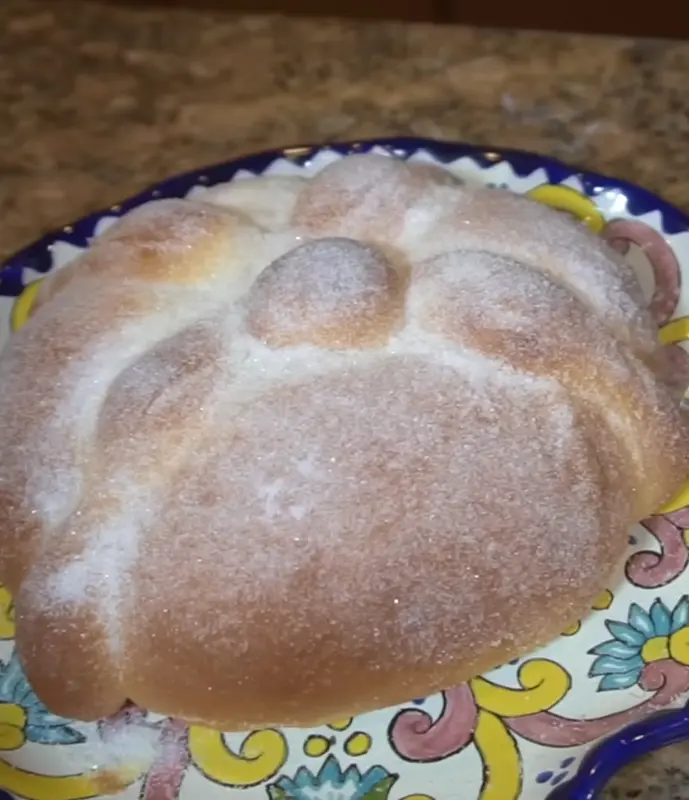
39. Nopalitos
Nopalitos showcase one of Mexico’s most distinctive indigenous ingredients—tender young pads of the prickly pear cactus, carefully cleaned of spines and prepared to minimize their natural viscosity (sliminess).
These cactus pads offer a taste similar to green beans with a hint of tartness, and a texture that’s both crisp and tender when properly cooked. Common preparations include nopalitos en salsa (simmered with tomatoes, onions, and chiles), ensalada de nopalitos (mixed with tomatoes, onions, cilantro, and lime juice), or grilled nopalitos served as a side dish.
What makes this ingredient special is its deep connection to Mexican identity—the nopal cactus appears on the Mexican flag and has been a staple food since pre-Hispanic times. Beyond its cultural significance, nopalitos provide remarkable nutritional benefits, being high in fiber, vitamins, and minerals while remaining low in calories.
This ingredient exemplifies how traditional Mexican cuisine incorporated desert plants that might seem intimidating or inedible to outsiders, transforming them into versatile, nutritious components of the daily diet.
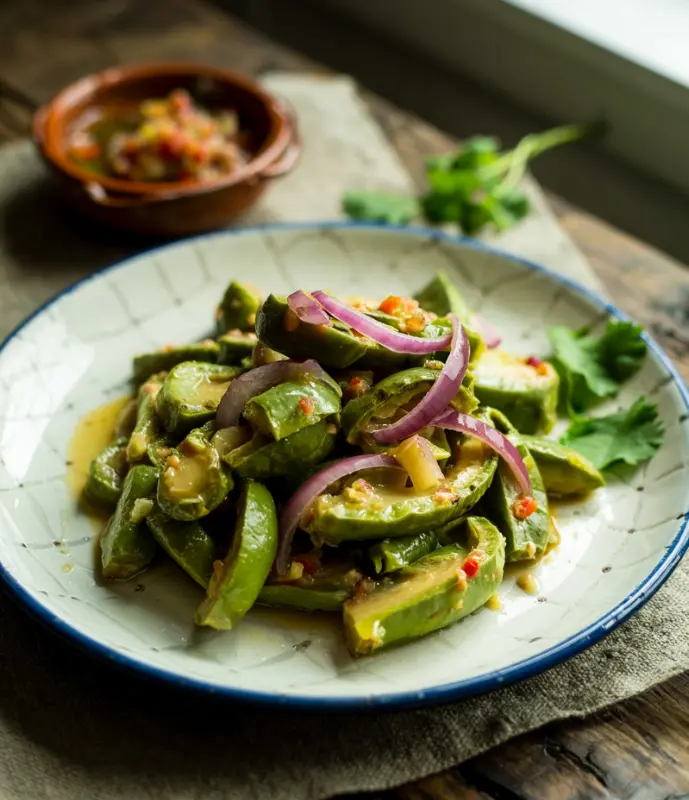
40. Machaca
Machaca represents northern Mexican ingenuity in food preservation, featuring beef that’s been dried, pounded, and rehydrated—a technique developed before refrigeration to preserve meat in the hot border regions.
Traditional machaca preparation involves drying thin strips of beef in the sun until completely dehydrated, then pounding it to a fluffy texture—the name comes from the Spanish “machacar,” meaning “to pound.”
Modern versions often skip the drying process, instead slowly cooking beef until it can be shredded very finely. The meat is typically sautéed with onions, peppers, and tomatoes, creating a versatile filling for burritos, tacos, or scrambled with eggs for the popular machaca con huevo breakfast dish.
What makes machaca special is its distinctive texture—the fine shreds absorb flavors beautifully while maintaining their integrity—and its connection to northern Mexico’s ranching culture.
This preparation demonstrates how practical preservation methods evolved into beloved culinary traditions that remain popular even when their original purpose is no longer necessary.
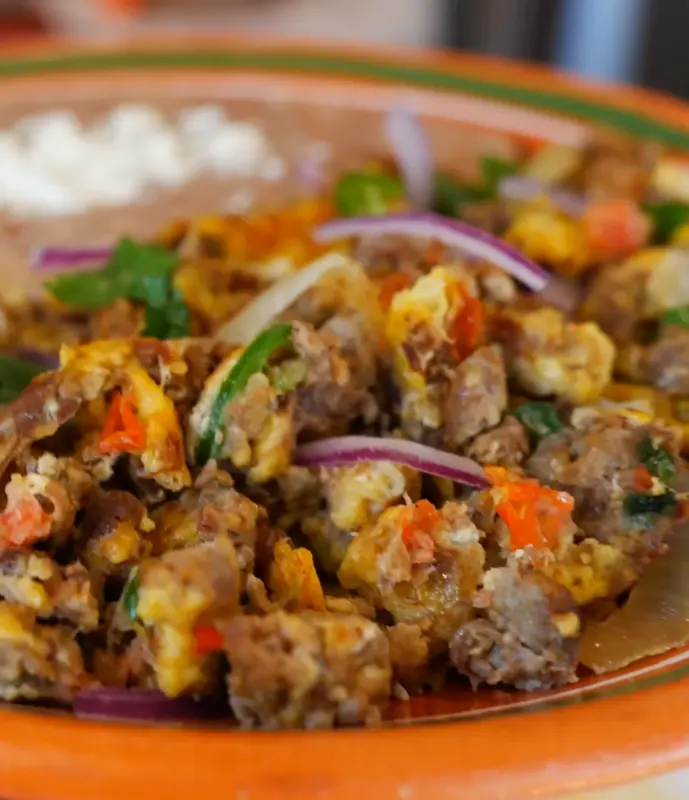
41. Huitlacoche
Huitlacoche (also spelled cuitlacoche) represents one of Mexican cuisine’s most distinctive ingredients—a corn fungus that transforms ordinary corn kernels into swollen, bluish-black spores with an extraordinary flavor often described as earthy, smoky, and mushroom-like with hints of corn sweetness.
While many agricultural traditions would consider this fungus (scientifically Ustilago maydis) a crop disease, Mexican cuisine elevates it to gourmet status, where it commands premium prices in markets and restaurants.
Traditional preparations include quesadillas filled with huitlacoche, creamy huitlacoche soup, or the fungus sautéed with onions, garlic, and chiles as a side dish or taco filling. What makes this ingredient special is its unique umami-rich flavor profile that cannot be found elsewhere, representing a truly indigenous taste experience.
The appreciation of huitlacoche exemplifies how Mexican cuisine often embraces ingredients that might be overlooked or discarded in other food cultures, recognizing their unique culinary potential and transforming them into celebrated delicacies.

42. Torta Ahogada
Torta Ahogada (“drowned sandwich”) from Jalisco represents Mexican sandwich-making at its most dramatic, featuring a crusty sourdough roll (birote salado) filled with carnitas, then completely submerged in a thin but potent chile de árbol sauce that turns the entire creation a fiery red.
A milder tomato sauce is sometimes used for those with less heat tolerance, though traditionalists insist on the full chile experience. What makes this sandwich special is how the bread’s sturdy crust maintains some integrity even when soaked in sauce, while the interior absorbs the flavors like a sponge.
The contrast between the tender carnitas and the sauce-saturated bread creates a messy but uniquely satisfying eating experience that requires both knife and fork—and usually plenty of napkins.
Garnishes typically include thin-sliced raw onions and a squeeze of lime to cut through the richness. This regional specialty, particularly associated with Guadalajara, demonstrates how Mexican street food continues to evolve distinctive local expressions that become iconic culinary attractions.
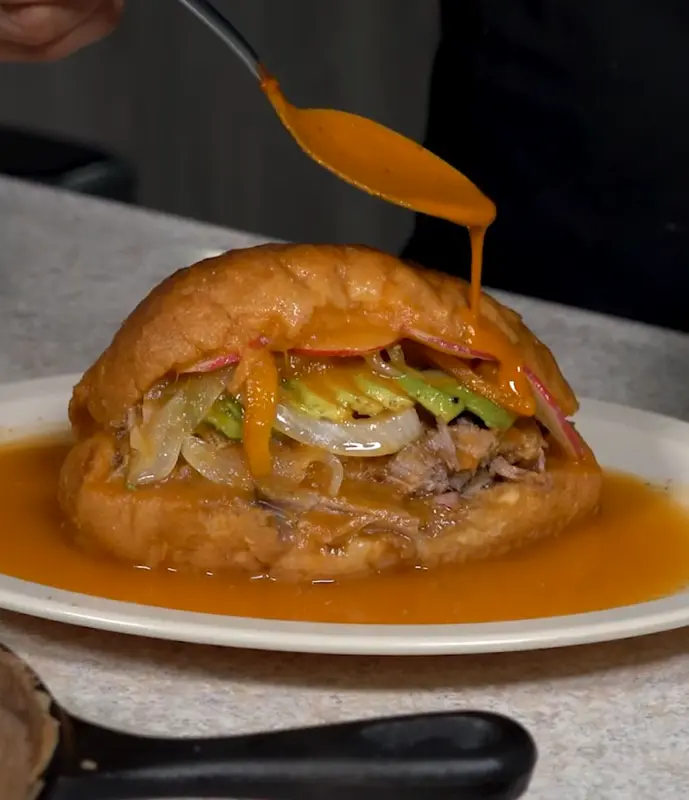
43. Chapulines
Chapulines represent one of Mexican cuisine’s most distinctive pre-Hispanic ingredients—toasted grasshoppers seasoned with lime, salt, and chile, particularly popular in Oaxaca and central Mexico.
These crunchy insects offer a unique flavor profile that’s simultaneously tangy, salty, and spicy with subtle earthy undertones. Typically harvested during rainy seasons when they’re most abundant, chapulines are cleaned, toasted on a comal, and seasoned before being sold in markets in large, rust-colored mounds.
They’re commonly enjoyed as a snack on their own, wrapped in tortillas, sprinkled over tlayudas, or incorporated into salsas. What makes chapulines special beyond their distinctive flavor is their nutritional profile—they’re exceptionally high in protein while remaining low in fat.
This ingredient exemplifies how pre-Hispanic food traditions survive in contemporary Mexican cuisine, offering sustainable protein sources that were valued long before such considerations became global concerns.
For many visitors to Mexico, trying chapulines represents a culinary adventure that connects them to indigenous food practices dating back thousands of years.
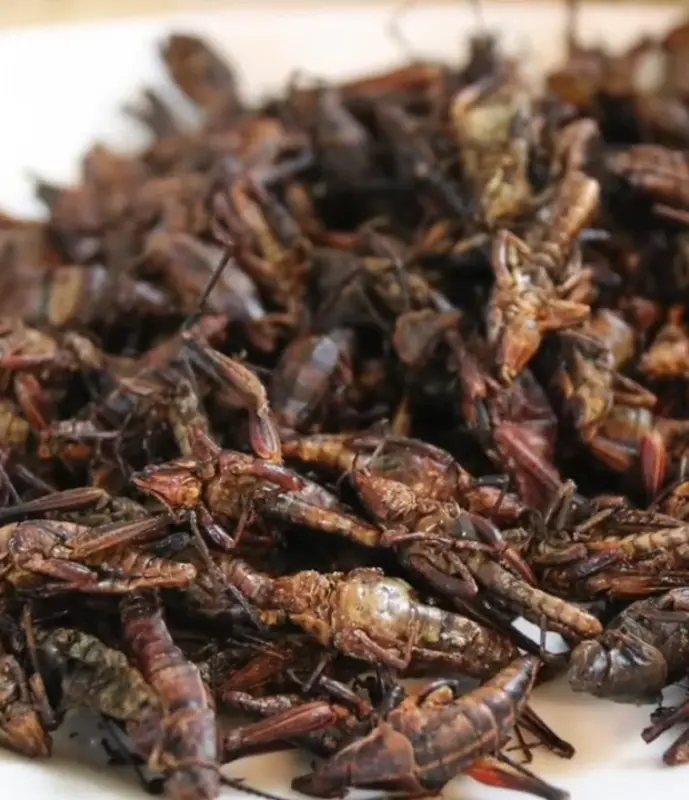
44. Alambre
Alambre showcases Mexican cuisine’s grilling expertise, featuring a sizzling mixture of grilled meats (typically beef, pork, or chicken), bacon, peppers, onions, and melted cheese that creates a savory, smoky flavor profile beloved in central Mexico.
The name means “wire” in Spanish, possibly referring to the skewers on which the ingredients were traditionally threaded before grilling. Modern preparations typically cook the components on a flat top grill before combining them with melted cheese to create a cohesive mixture that’s served with warm tortillas, allowing diners to create their own tacos.
What makes alambre special is how the different ingredients maintain their distinct textures while melding flavors—the caramelized edges of the meat, the crisp bacon, the slightly charred vegetables, and the gooey cheese creating a perfect harmony.
This dish demonstrates the influence of Middle Eastern cooking techniques on Mexican cuisine, particularly in areas where Lebanese immigration has left a lasting culinary impact, while remaining distinctly Mexican in its flavor profile and presentation.
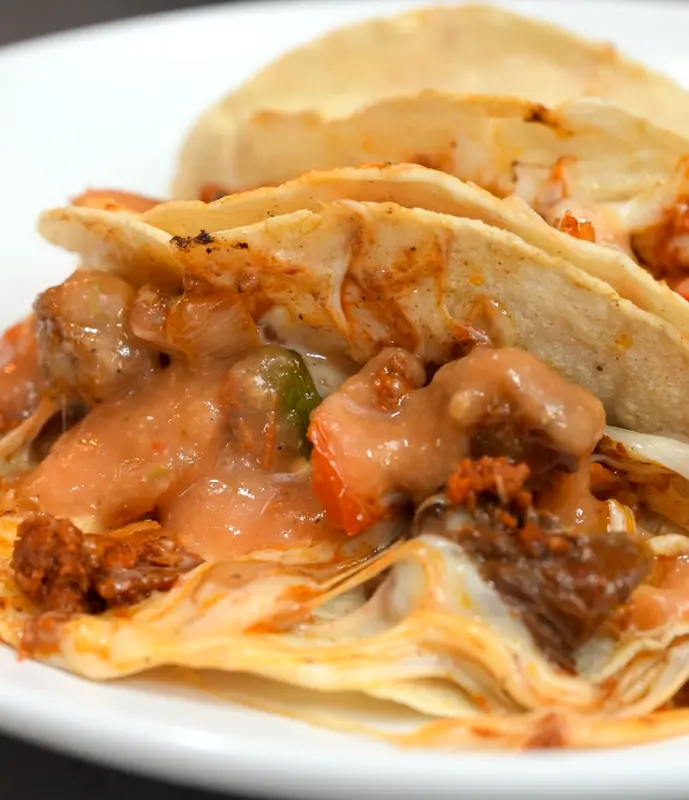
45. Tacos de Canasta
Tacos de Canasta (“basket tacos”) represent Mexican ingenuity in street food, featuring small tortillas filled with simple preparations like potato, refried beans, chorizo, or chicharrón, then stacked and wrapped in cloth inside a basket where they gently steam, developing their characteristic soft, slightly oil-infused texture.
Originally created as a portable lunch for workers, these tacos are prepared early in the morning and maintain their warmth and flavor for several hours thanks to the insulation of the basket. What makes them special is their unique texture—neither crisp like taqueria tacos nor completely soft like unstiffened tortillas, but somewhere in between with a subtle pliability and slight shine from the thin layer of oil applied before steaming.
Vendors typically sell them from baskets mounted on bicycles, with simple garnishes like salsa verde, dried chile sauce, and pickled vegetables available for customization. This unpretentious street food demonstrates Mexican cuisine’s practical creativity in developing dishes that solve specific needs—in this case, how to keep prepared tacos warm and flavorful hours after cooking.
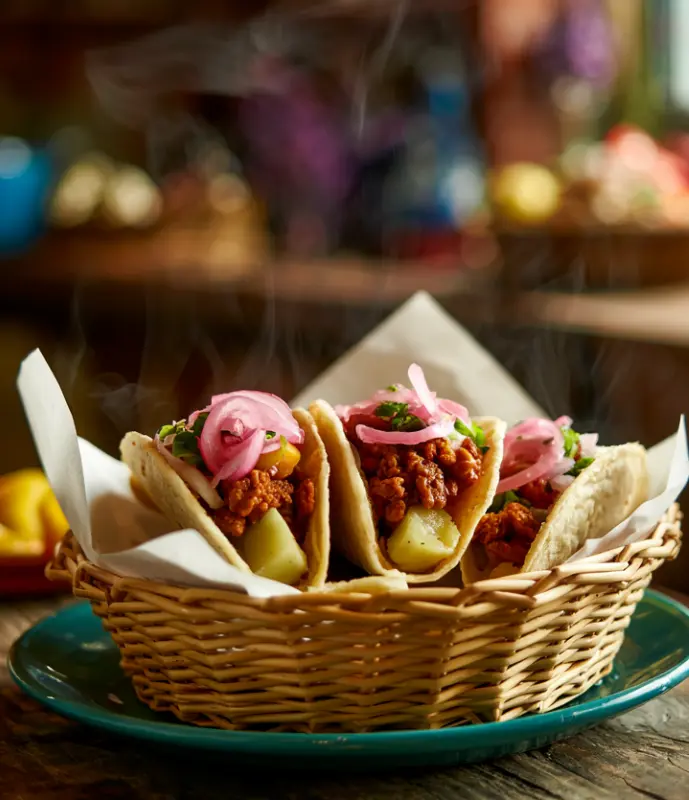
46. Sopa de Lima
Sopa de Lima showcases the distinctive culinary heritage of Mexico’s Yucatán Peninsula, featuring a light yet flavorful chicken broth infused with the region’s native thin-skinned limes, which offer a unique floral-citrus aroma different from Persian limes used elsewhere.
The soup typically includes shredded chicken, tomatoes, bell peppers, onions, and garlic, topped with crispy fried tortilla strips for textural contrast. What makes this soup special is the balance it achieves—the aromatic lime provides brightness without overwhelming acidity, complementing the savory chicken broth perfectly.
The soup reflects the Yucatán’s unique cultural and agricultural heritage, where Maya traditions blend with Caribbean and European influences, and where the local citrus varieties play a prominent role in defining regional flavors.
Traditionally served as a starter or light main course, sopa de lima demonstrates how a relatively simple preparation can achieve remarkable flavor depth when built around exceptional local ingredients used with knowledge and precision.

47. Mixiote
Mixiote features meat (traditionally rabbit or lamb, though now often chicken or mutton) marinated in a paste of dried chilies and spices, wrapped in the thin, translucent skin of the maguey cactus leaf, and slow-cooked until extraordinarily tender.
This pre-Hispanic cooking method creates a perfect environment for the meat to steam in its own juices along with the marinade, developing deep flavors while remaining moist. The maguey skin wrapper (also called mixiote) imparts subtle herbal notes while creating an effective cooking pouch. Modern adaptations sometimes substitute parchment paper or aluminum foil when maguey skin is unavailable, though purists maintain this changes the flavor profile.
What makes mixiote special is how the slow cooking process allows the marinade to penetrate the meat completely while the sealed environment concentrates the flavors. Each package creates an individual portion with its own intensely flavored sauce—a perfect example of how Mexican cooking techniques maximize flavor development through patient, methodical preparation methods that respect both ingredients and tradition.
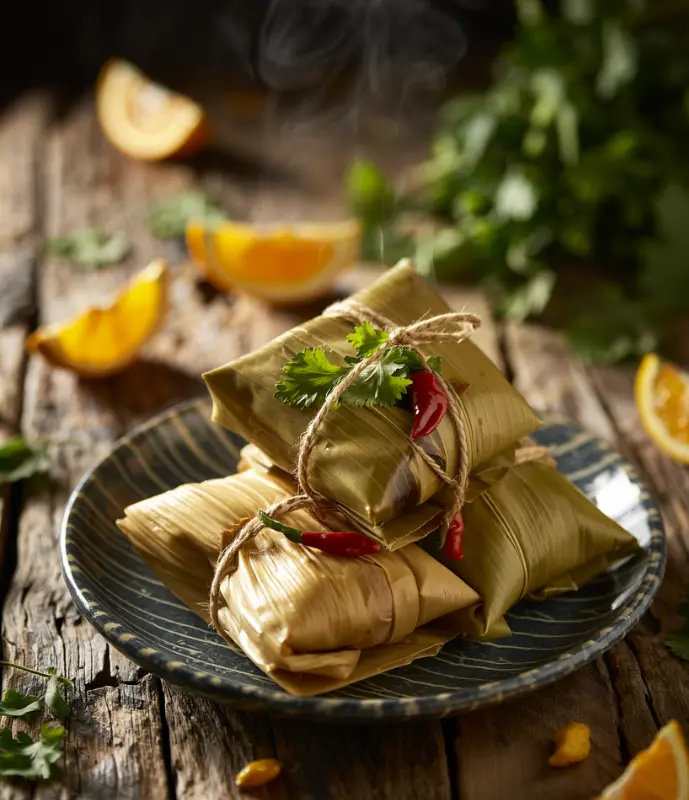
48. Conchas
Conchas (meaning “shells”) are Mexico’s most recognizable sweet bread, featuring a soft, slightly sweet roll topped with a cookie-like crust shaped to resemble a seashell.
These beloved morning treats come in various colors and flavors—traditionally vanilla (white), chocolate (brown), or strawberry (pink)—with the distinctive shell pattern created by pressing a special cutter into the sweet topping before baking.
The contrast between the soft, slightly enriched bread and the crumbly, sweet crust creates a perfect textural balance that pairs beautifully with Mexican hot chocolate or coffee.
What makes conchas special beyond their iconic appearance is their cultural significance—they’re fixtures in Mexican panaderías (bakeries) and represent morning ritual for many families.
While relatively simple in flavor compared to some European pastries, conchas exemplify Mexican baking’s focus on texture and visual appeal, creating an instantly recognizable treat that evokes nostalgia for Mexicans worldwide.
These sweet breads demonstrate how post-colonial Mexico developed its own distinctive baking traditions that remain beloved staples of daily life.

49. Atole
Atole represents one of Mexico’s oldest beverage traditions, featuring masa (corn dough) dissolved and cooked in water or milk until it reaches a smooth, slightly thick consistency, then flavored with cinnamon, vanilla, fruit, or chocolate (the chocolate version is called champurrado).
This warming drink dates back to pre-Hispanic times when it served as both sustenance and ritual beverage among indigenous peoples. Modern versions often incorporate sugar for sweetness, but the essential character remains unchanged—a comforting, subtly corn-flavored base that serves as a canvas for various flavorings.
What makes atole special is its dual nature as both beverage and light meal, providing warmth and nourishment particularly during cool mornings or evenings. The drink’s velvety texture coats the palate pleasantly while its corn foundation connects modern Mexicans to their ancient culinary heritage.
Traditionally served alongside tamales during celebrations and holiday gatherings, particularly during Christmas posadas, atole demonstrates how pre-Hispanic culinary traditions remain integrated into contemporary Mexican life, adapting over centuries while maintaining their essential character.
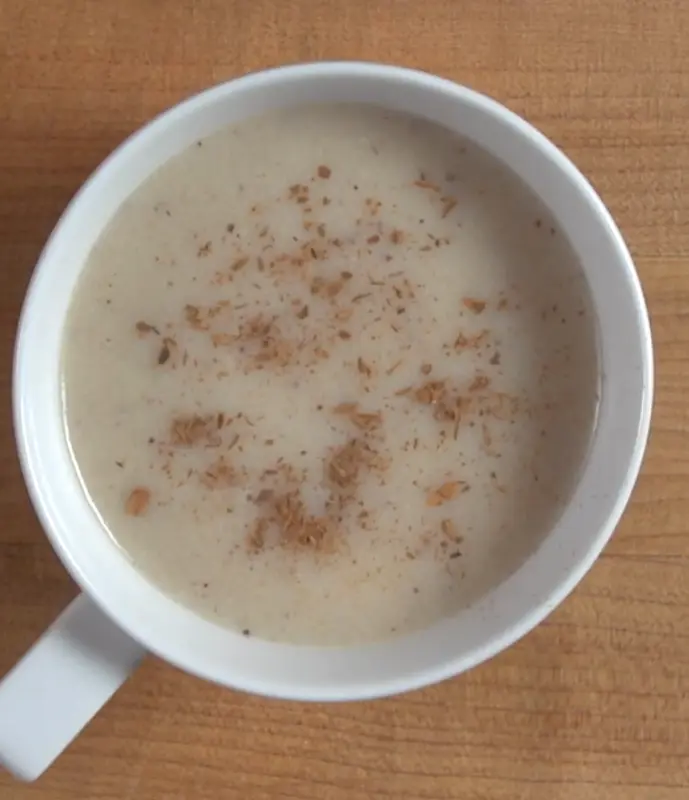
Conclusion
After exploring these 49 Mexican food names with pictures, we’ve discovered the incredible diversity of Mexican cuisine. From complex moles to street tacos, each dish represents centuries of tradition and cultural fusion.
Embrace these authentic flavors and experience why Mexican food continues to captivate people worldwide.


